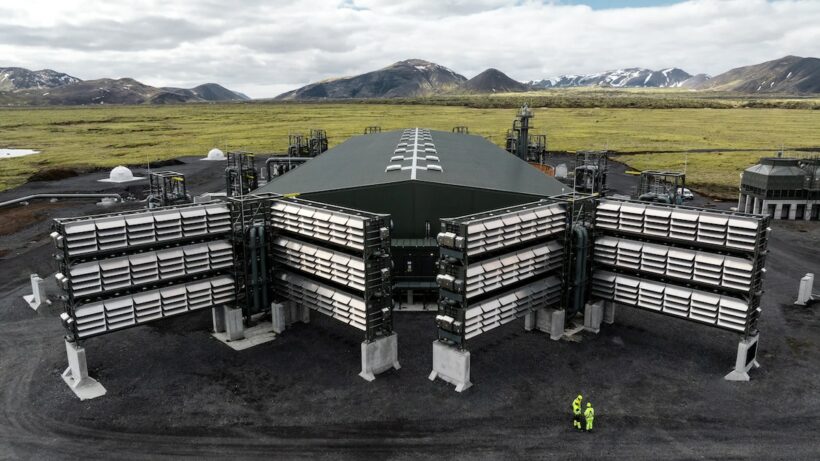Swiss company Climeworks has opened the biggest operational direct air capture (DAC) plant in the world to pull carbon dioxide from the atmosphere.
By Cristen Hemingway Jaynes
The Mammoth plant, located in Iceland, is nearly ten times bigger than Orca, its second-largest plant.
“Starting operations of our Mammoth plant is another proof point in Climeworks’ scale-up journey to megaton capacity by 2030 and gigaton by 2050,” said Jan Wurzbacher, Climeworks co-founder and co-CEO, in a press release from Climeworks.
The DAC process sucks carbon from the air and stores it, most often underground, where it can no longer contribute to global heating.
With global efforts to reduce fossil fuel emissions inadequate to prevent the worsening effects of climate change, United Nations scientists have estimated that carbon dioxide in the billions of tons will need to be removed to meet climate targets, reported Reuters.
Climeworks’ new DAC plant has an annual carbon capture capacity of 36,000 metric tons. The Mammoth plant, begun in 2022, will be completed by the end of this year.
The company’s first commercial DAC project was also in Iceland — the Orca plant — and has an annual capacity of 4,000 metric tons.
“Mammoth has successfully started to capture its first CO₂. Climeworks uses renewable energy to power its direct air capture process, which requires low-temperature heat like boiling water. The geothermal energy partner ON Power in Iceland provides the energy necessary for this process,” Climeworks said. “Once the CO₂ is released from the filters, storage partner Carbfix transports the CO₂ underground, where it reacts with basaltic rock through a natural process, which transforms into stone and remains permanently stored.”
Critics of carbon capture technology argue that it uses an enormous amount of energy, is expensive and that focusing on removing carbon from the atmosphere could encourage companies to continue burning fossil fuels rather than lowering their emissions. Many critics also emphasize that its effectiveness has not been proven.
Speaking about carbon capture in general, Lili Fuhr, Center for International Environmental Law’s fossil economy program director, said the technology “is fraught with uncertainties and ecological risks,” as CNN reported.
The total carbon removal capacity on Earth can only remove roughly 0.01 million metric tons per year of the 70 million tons that would need to be removed by the end of the decade to meet worldwide climate goals, the International Energy Agency said.
Climeworks — which does not have ties to fossil fuel companies — said it is looking to lower the costs of DAC technology to $400 to $600 per ton by the end of the decade and $200 to $350 a ton by 2040, reported Reuters.
The press release said that development is currently in the works for megaton Climeworks hubs in the United States.






